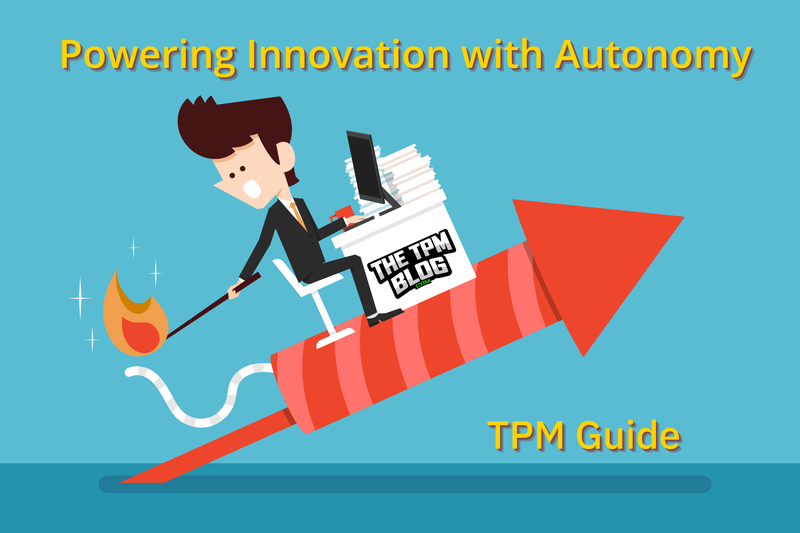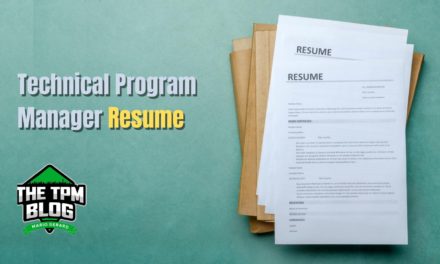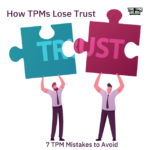Innovation thrives when teams and individuals can make decisions and own their work. Without this freedom, creativity is stifled, and teams are left checking boxes instead of breaking new ground. When people are trusted to explore new ideas, test solutions, and fail fast, they develop the confidence to push boundaries. Collaboration sparks innovation at the team level, but breakthroughs truly happen at the individual level.
As a TPM, your role is pivotal in fostering innovation. It’s not just about managing timelines and deliverables—it’s about empowering teams to innovate while maintaining alignment with broader business goals. When you remove roadblocks, offer guidance, and allow teams to experiment, you create the perfect environment for innovation to flourish.
How TPMs Can Support Autonomy and Drive Innovation
- Set Clear Objectives – As a TPM, one of your core responsibilities is to provide clear direction and goals. But rather than dictating every step, focus on the “what” and let your team figure out the “how.” This approach allows for creative problem-solving and gives team members ownership over the execution.
- Facilitate Decision-Making – Trust your team to make decisions. Provide them with the resources and support they need, but empower them to take ownership of their solutions. When individuals feel trusted, they’re more likely to step up and take initiative, leading to more innovative outcomes.
- Remove Roadblocks – One of the biggest barriers to innovation is red tape and unnecessary processes. As a TPM, your job is to clear the path, removing obstacles that slow your team down. Minimizing distractions and reducing friction gives your team the space to focus on what matters: solving problems and pushing boundaries.
- Encourage Risk-Taking – Not every idea will work, and that’s okay. Encourage your team to take risks and try new approaches, even if failure is a possibility. When you create a culture where failure is seen as part of the learning process, your team will feel safe to explore new ideas, leading to more innovative solutions.
- Foster Collaboration – Autonomy doesn’t mean working in isolation. It’s essential to foster cross-functional collaboration while allowing teams to innovate within their domain. Align your teams on goals and objectives, but allow them the flexibility to collaborate and develop solutions in their own way.
See also: How TPMs Turn Conflict Into Collaboration
Balancing Experimentation and Delivery
While encouraging experimentation is key to innovation, TPMs must strike a balance between allowing freedom and keeping projects on track. When engineers are constantly experimenting, it’s important to establish guardrails that keep the team focused on delivering results without stifling creativity.
- Set Clear Boundaries on Time – Allow your team time to experiment but set boundaries on how long they can explore new solutions before committing to an approach. This helps avoid endless iterations and ensures projects don’t veer off course.
- Align on Key Milestones – Ensure that teams have specific milestones to hit. Regular check-ins help you monitor progress and guide the team back on track if experimentation becomes too time-consuming.
- Measure Outcomes – Experimentation should still be measurable. Establish metrics to gauge whether the new ideas are making a tangible impact on the overall goal. If an experiment isn’t moving the needle, it may be time to pivot or move forward with a more proven approach.
Reinvent or Reuse: Knowing When to Innovate
A key challenge for TPMs is knowing when to push for innovation and when to stick with existing solutions. Not every problem requires reinvention; sometimes, reusing established processes or technologies can be more efficient. Here’s how to decide:
- Evaluate Business Impact – Ask whether the new solution will significantly impact the product or company. Reusing existing solutions may be more effective if it’s a minor feature with low business impact .Reserve reinvention for opportunities where it truly moves the needle.
- Assess Resource Investment – Innovation requires time and resources. Weigh the cost of experimentation versus the benefits. It may be the better route if a quick, established solution can solve the problem without heavy investment.
- Leverage Previous Work – Sometimes, innovation doesn’t mean starting from scratch. Encourage your team to build on past successes, using elements of previous projects to create something new without wasting time reinventing foundational components.
- Strategic Innovation – Focus innovation efforts where they can offer a competitive advantage or long-term value. Encourage the team to innovate in areas that differentiate the product or address core challenges, rather than reinventing for the sake of it.
A Real Example of Autonomy Leading to Innovation
In one of my previous TPM roles, we had to solve a complex technical challenge. Rather than dictate how the problem should be approached, we empowered the team to explore different solutions and take ownership of the process. I focused on clearing any roadblocks and ensuring alignment with company goals, but I gave the engineers the freedom to experiment and think outside the box, with time set aside early in the program schedule for experimentation.
This autonomy led the team to develop a groundbreaking solution that not only addressed the immediate issue but also resulted in a patent. It was a perfect example of how providing teams with the freedom to innovate can lead to unexpected, high-impact results. The sense of ownership and trust drove the team to push beyond conventional solutions, and the end result was truly game-changing.
Conclusion
When TPMs lead with autonomy in mind, they create an environment where innovation can thrive. It’s not just about incremental progress—it’s about fostering an atmosphere where creativity and ownership drive the team forward. Clear objectives, the freedom to experiment, and the trust to take risks are all critical components for unlocking innovation.
At the same time, it’s crucial to balance autonomy with structure. This balance is the key to ensuring that projects remain on track and resources are used wisely. By knowing when to innovate versus reuse, TPMs can lead teams to achieve breakthrough results while delivering on time.
Ready for your next career adventure?
Get personalized advice from Mario to confidently choose the roles, companies, and skills that shape your future!
Author

Preetha Annamalai
Preetha Annamalai is an ex-Amazon Senior Manager who has led cross-functional software, TPM, and product teams. She has 18+ years of experience driving strategic initiatives and fostering innovation. Preetha excels at building high-performance teams and guiding professionals to reach their full potential.

















